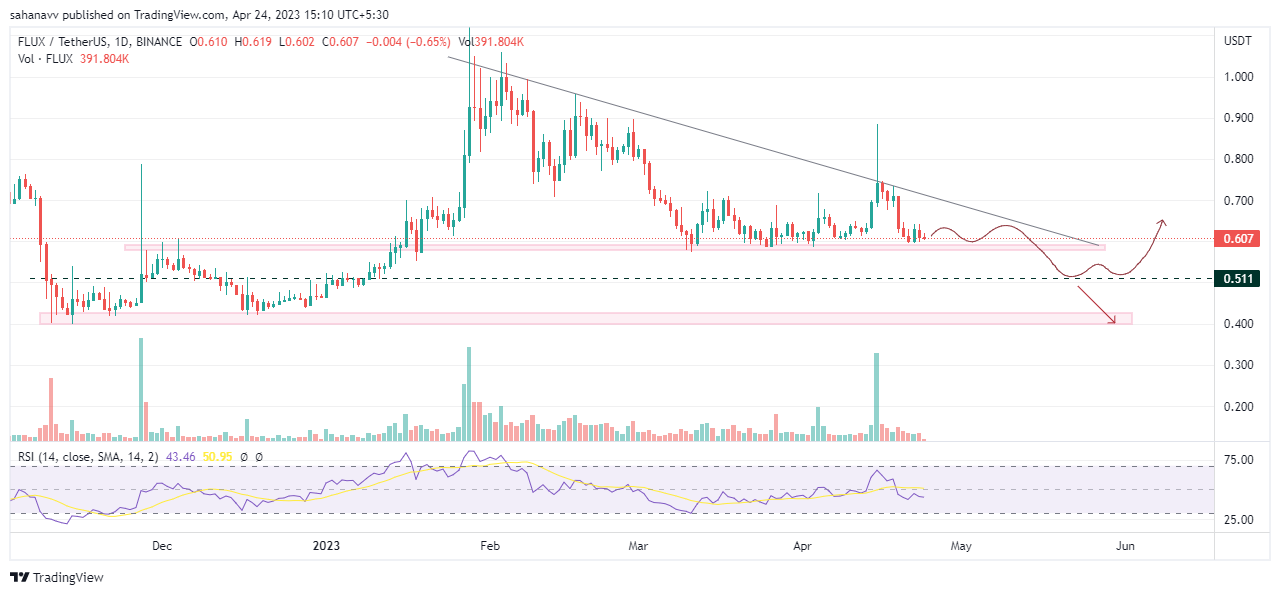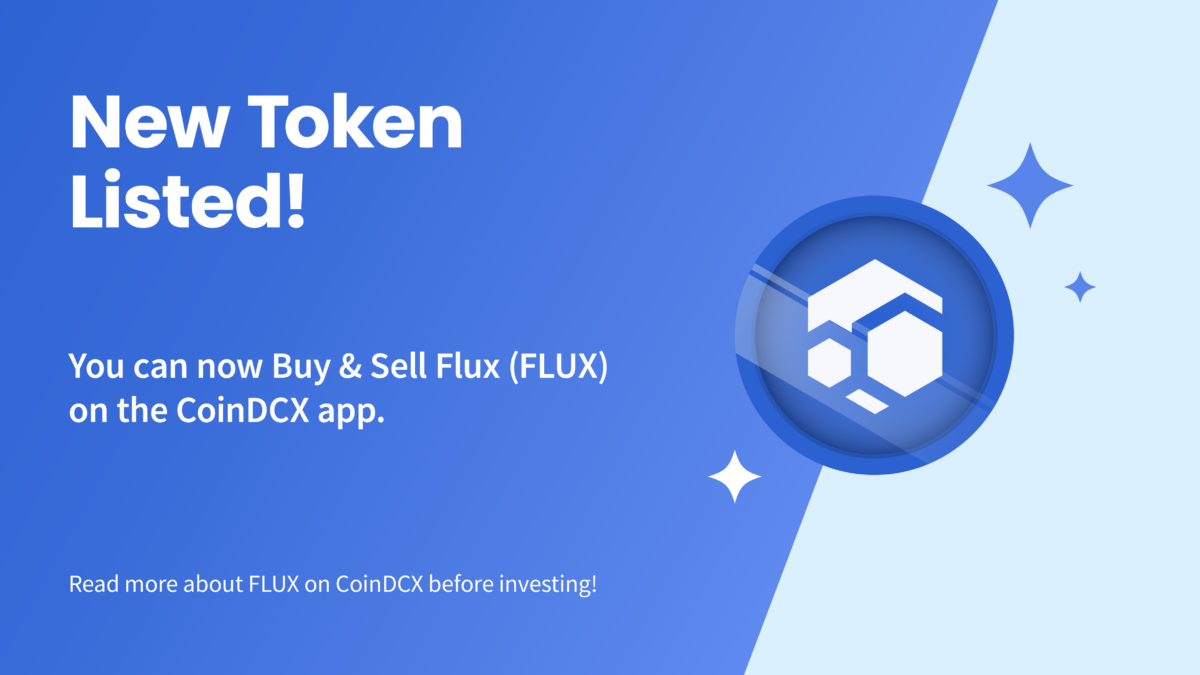Table of Contents
ToggleWhat is Flux (FLUX)?
The innovation of Blockchain has enabled the development of great features and products within the space like cryptographic security, decentralization, etc. However, come chain suffers limited scalability that the Flux ecosystem intends to solve. It is an innovative blockchain-as-a-service (BaaS) that is designed to improvise the scalability issue with the traditional chains.
The network is much similar to Amazon Web services (AWS) or Google Cloud, but the only difference is, they use the internet as their base but Flux is based on blockchain. It offers enhanced security and decentralization and also maintains a link to other chains through parallel assets.
| Launch Date | June 22, 2020 |
| Founder | Daniel Keller, Tadeas Kmenta, and Parker Honeyman |
| Blockchain Protocol | Flux blockchain |
| Native Token | FLUX |
| Market Cap | $180.02 million |
| Token Type | Native |
| Circulating Supply | 295.25 million |
| Total Supply | 440 million |
| Consensus Method | Proof-of-Useful Work |
Who Are the Founders of the Flux?
Flux Network was founded by Daniel Keller, Tadeas Kmenta, and Parker Honeyman. Daniel is from the USA and is the current Chief Strategy Officer at Flux. He has 25-plus years of experience in technology infrastructure, operations, and large-scale project leadership and also can bridge communication across various organizations.
Tadeas has been developing the project since its inception and is the present Chief Innovation Officer, focusing on new and emerging technology. Besides, Parket Honeyman, the Chief Operations Officer leads the technical team in Flux.
How Does Flux Work?
Flux’s Proof-of-Useful-Work (PoUW)
Flux working is based on the proof-of-work (PoW) mechanism as it is a hard fork of Bitcoin via ZCash, wherein the network nodes act as miners to validate the transactions. To promote green energy, the platform has come up with a Proof-of-Useful-Work consensus that detects ‘deepfakes’ which is a serious problem due to the increasing AI technology that requires heavy computational power. Besides, the mining algorithm, ZelHash, helps to mine the crypto via GPUs instead of ASIC machines like Bitcoin.
Flux Architecture
The platform operates as a multi-chain cloud infrastructure provider, with the Flux chain being the core of several other chains. Hence, the applications built on the Flux ecosystem carry a high level of cross-chain interoperability, which is achieved via FluxOS, which is a cloud-based operating system.
Nodes On Flux Ecosystes
There are two main types of nodes in the Flux ecosystem, FluxNodes, or running nodes, and mining nodes.
– Running Nodes
These represent users who provide their computing resources to the network for the dApps to use. In return, these nodes are rewarded with FLUX crypto for providing resources, where-in half of the mining block rewards generated by miner nodes are given to running nodes. These nodes are very important, as the network’s scalability and efficiency are dependent on them.
– Mining Nodes
Mining nodes offer a unique block validation service to the network with a considerably lower mining difficulty compared to that of Dogecoin or Bitcoin. As the block time is also shorter than BTC, the miners earn rewards more frequently, with additional bonus rewards in the form of parallel assets as well as the Flux shared node program, Titan.
Flux Parallel Assets
Flux chain is the core of its architecture, which is connected to other chains like Ethereum (ETH), BNB Chain (BNB), Kadena (KDA), Solana (SOL), Tron (TRX), Avalanche (AVAX), and Ergo (ERG). The native token of each of the chains that are connected to Flux is called a parallel asset, which conforms to the native token standard of the host chain. These assets can easily be transferred from host chains to Flux and converted to Flux coins.
What Makes Flux Unique-Use Cases?
- Flux maintains a complete decentralized network among the projects that claim themselves as Web3 but use centralized infrastructure.
- Therefore, the applications built may not witness a single point of failure, as it appears with the centralized data centers in the centralized clouds, along with 100% uptime.
- The platform uses a Proof-of-Useful Work (PoUW) consensus mechanism, which intends to solve the current sustainability issues.
- The parallel assets in the Flux ecosystem allow the tokens to port from one chain to another, integrating with different applications.
- The platform also harnesses the vast amount of computing power that the GPU miners utilize to secure the chain, unlike PoW chains that focus on random problems instead of real-world problems.
Flux (FLUX) Price Analysis

Source: TradingView
- The FLUX price has been trading within a bearish descending triangle, maintaining a trend along the lower support.
- The market is yet to reach the apex of the triangle and hence is expected to maintain trade within the current consolidation for some time ahead.
- However, the levels are believed to drop significantly after reaching the peak as the bulls continue to remain aloof, which may further trigger the bears.
- Hence, a drop to the lower support at around $0.51 may be imminent, and if the bulls spark a rebound, the price may regain its value above $0.6; otherwise, it may continue to drop toward the major support at $0.4.
| FLUX Price Today | $0.6086 |
| Price Change (Yearly) | -56.1% |
| Market Dominance | 0.02% |
| Market Rank (as per CMC) | 161 |
| Market Cap | $179.7 million |
| Fully Diluted Market Cap | $267.8 million |
| ATH | $4.1 |
| ATL | $0.01 |
How to Buy Flux in India?
To buy Flux in India, just follow the below-mentioned steps:
- Download the CoinDCX App on your Smartphone
- Enter the details required for registration
- Complete KYC
- After your profile is verified, fund your wallet and buy a FLUX
Related posts
What is Alien Worlds (TLM)? How to Buy TLM Token in India?
Alien Worlds: Explore, compete, and thrive in a decentralized NFT metaverse.
Read more
What is eCash (XEC)? How to Buy XEC Token in India?
eCash (XEC): Revolutionizing digital transactions, leaving Bitcoin’s shadow in style!
Read more


